Inside the VIB Protein Core’s QC toolbox
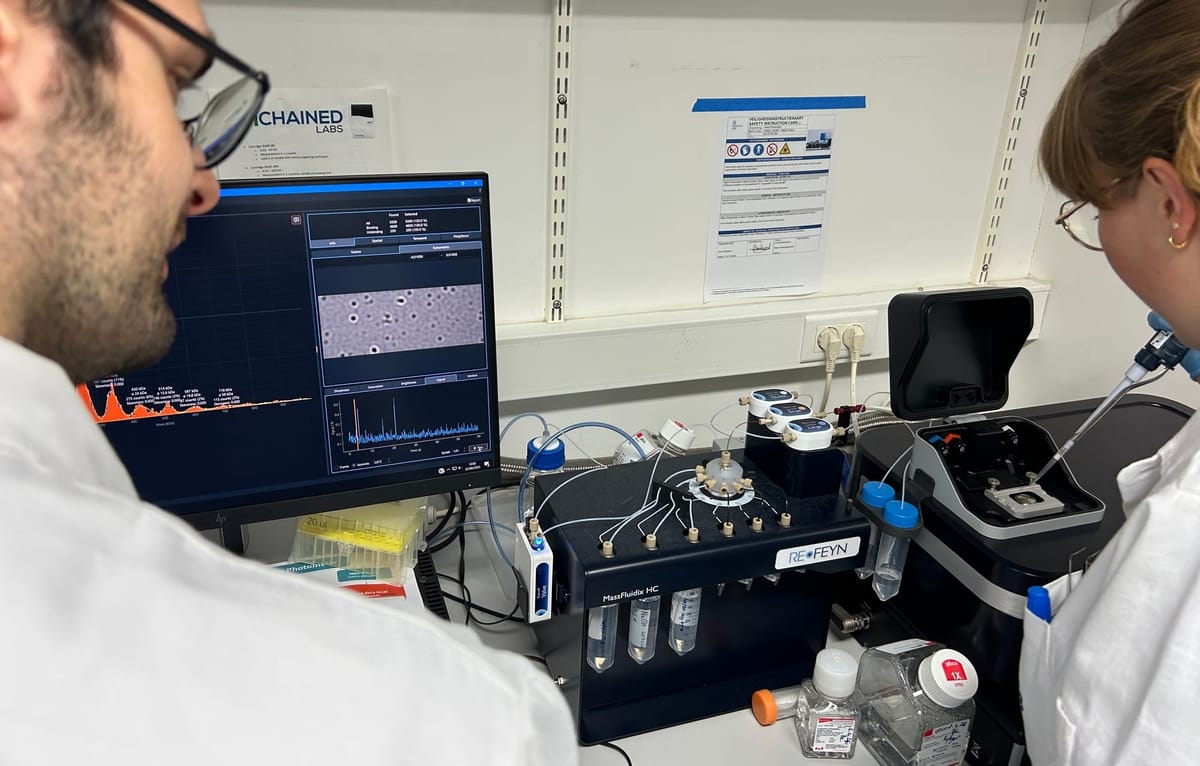
Across structural biology, therapeutics, and functional assays, the difference between a crisp result and a confusing one is almost always quality control. That’s why Kevin Balcaen from the VIB Protein Core launched #VIBProteinQC, a weekly LinkedIn series that unpacked the practical tools we use every day to validate proteins before they reach your bench.
“QC can feel like a black box,” says Kevin, who oversees quality as senior protein expert and lab manager at the VIB Protein Core. “I wanted to demystify it. Show what we measure, why we measure it, and how the pieces fit together so researchers can make better decisions, faster.”

Below is a single, readable guide inspired by Kevin’s series. Complete with the core principles, the go-to methods, and the situations where each shines. Because no single assay tells the full story.
Taking a first look: purity, concentration, contaminants
- SDS-PAGE
The classic gatekeeper under denaturing conditions. We check purity, expected band size, degradation products, and batch consistency. - Protein concentration through UV/Vis (A280) + refractometry
A280 gives a fast concentration estimate (and a 260/280 flag for nucleic acids). Refractometry uses the sample’s refractive index to calculate concentration independent of aromatic residues—ideal for low-Trp/Tyr proteins and chemically modified constructs.“Using both takes minutes and prevents hours of downstream trouble,” notes Kevin. - Endotoxin (LPS) testing
Even tiny amounts of LPS can derail cell assays or in vivo studies. Rapid cartridge assays quantify endotoxin in minutes and keep biology meaningful and safe.
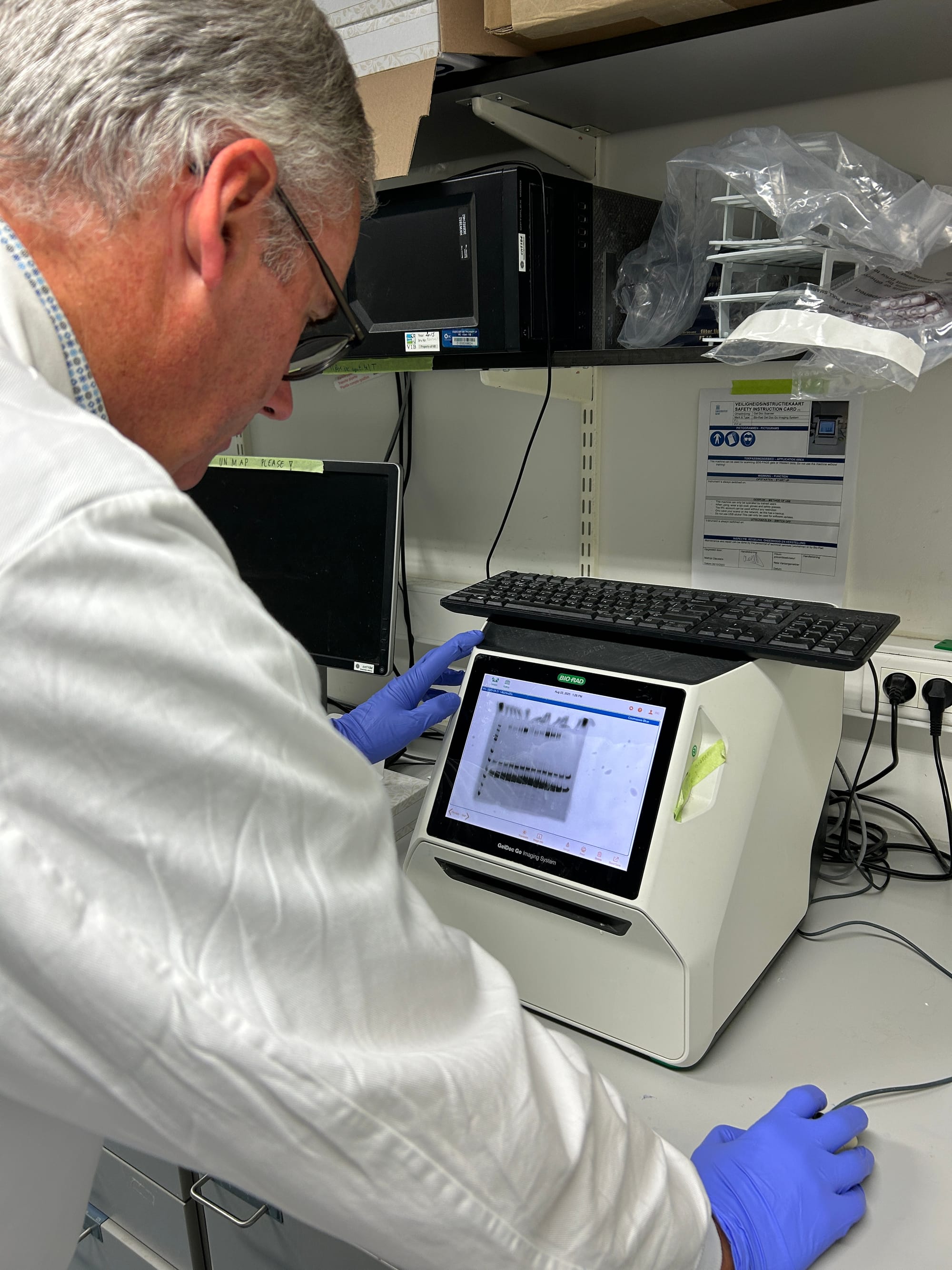
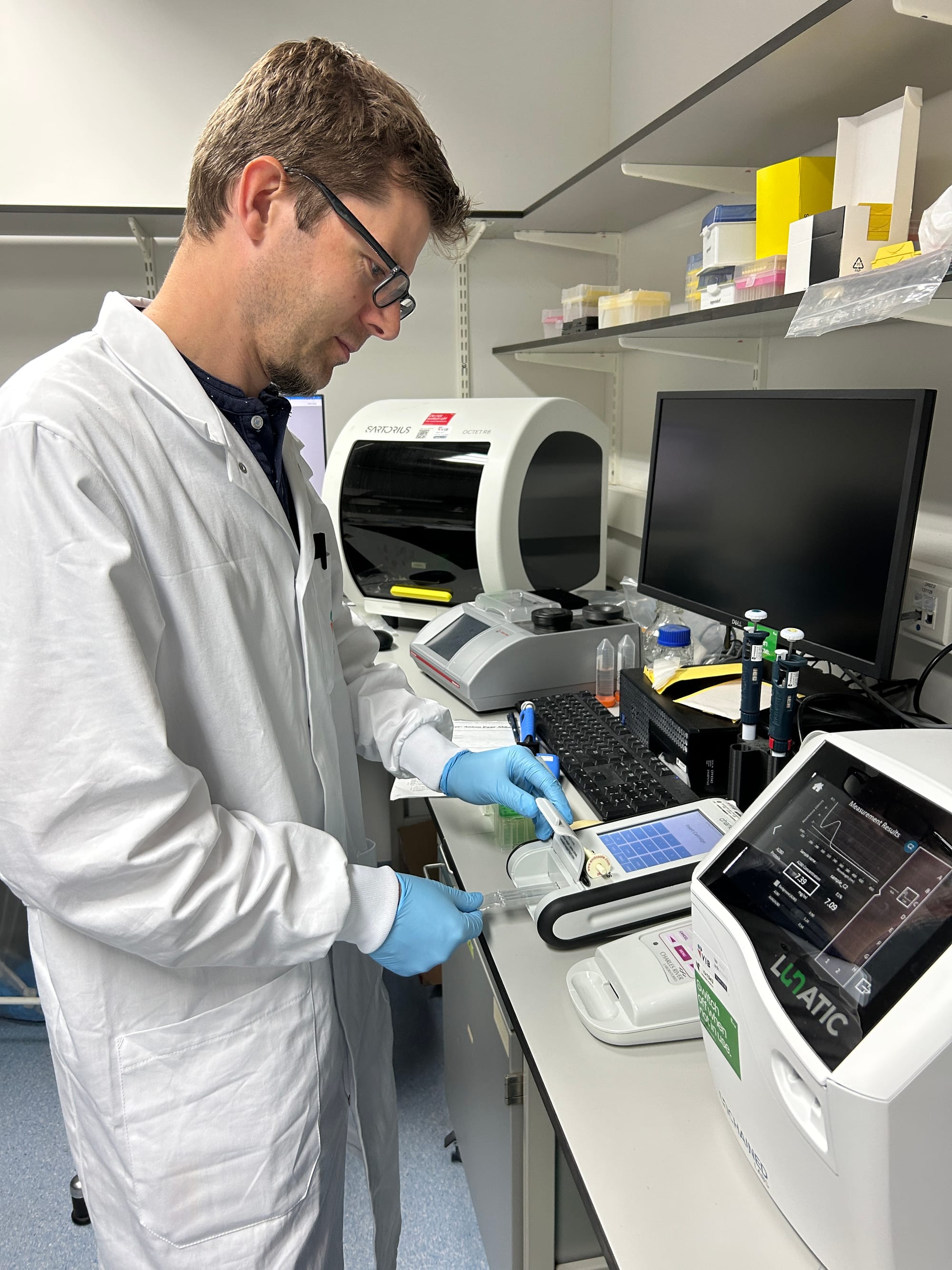
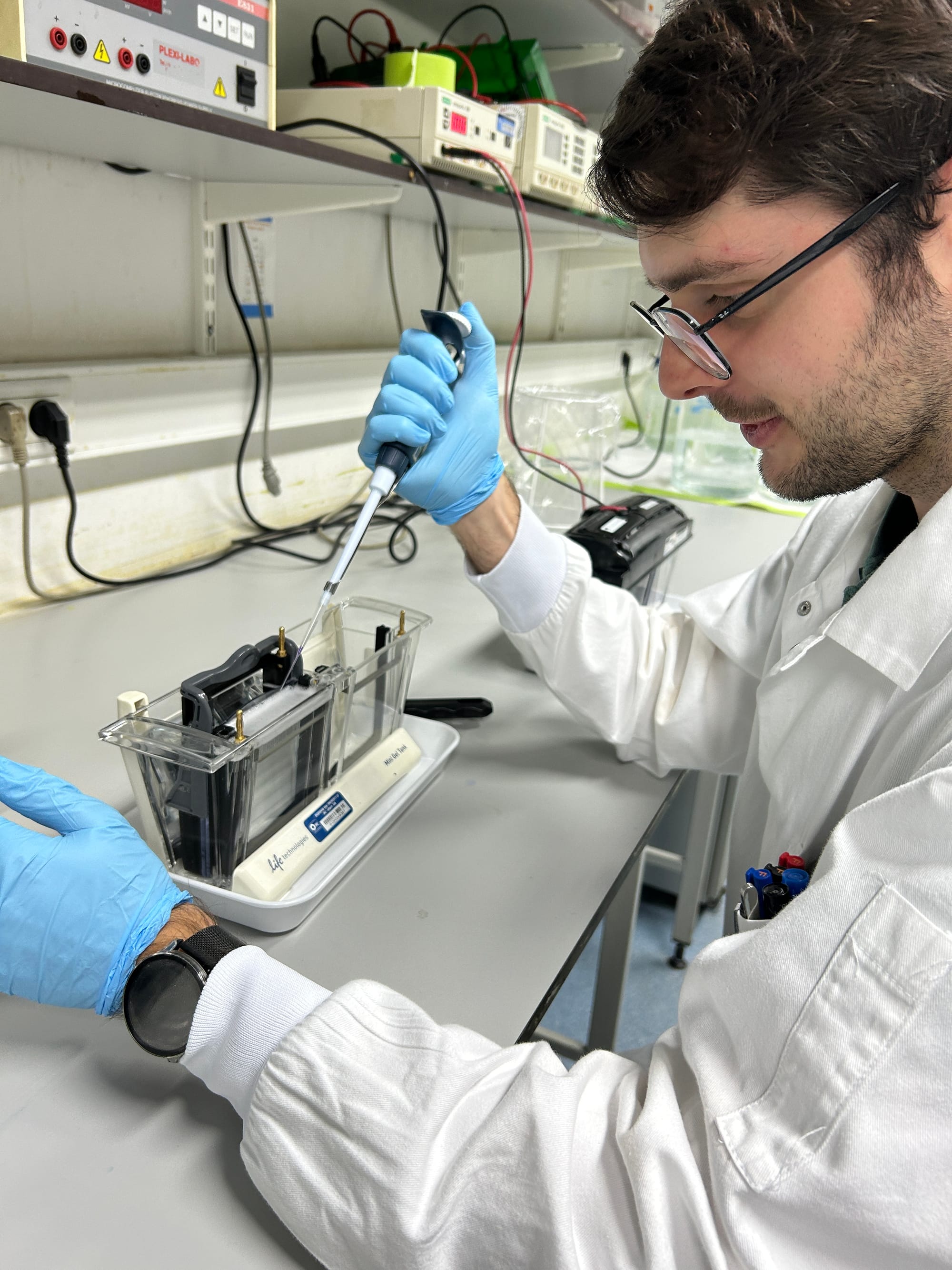
The VIB Protein Core team in action
Behavior in solution: homogeneity and stability
- SEC-MALLS (± QELS)
Size-exclusion chromatography coupled to multi-angle laser light scattering gives absolute molecular weight, aggregation/oligomer state, and radius of gyration in native buffer—no calibration curves, no labels. Inline QELS adds hydrodynamic radius for even deeper insight. We also stress-test freeze–thaw stability here. - DLS (Dynamic Light Scattering)
A quick, label-free readout of size distribution and polydispersity that’s sensitive to early aggregation and formulation effects. With temperature ramps, DLS maps thermal stability and unfolding behavior.
“SEC-MALLS tells you what species are present and their absolute mass; DLS tells you how the population behaves as particles in solution,” says Kevin. “Running both across freeze-thaw cycles lets us make confident go/no-go decisions on freezing.”
Identity & heterogeneity: what exactly do we have?
- Mass spectrometry (MS)
The gold standard for identity. Intact mass confirms the molecular weight and heterogeneity; peptide mapping (MS/MS) verifies sequence and reveals PTMs, truncations, and conjugation sites. - Mass photometry (MP)
Single-molecule mass analysis in native conditions. MP reports oligomeric state and sample heterogeneity from microlitre volumes—an elegant complement to SEC-MALLS and MS when you need a fast, visual snapshot.
Function & interactions: does it bind and does it work?
- BLI (Bio-Layer Interferometry)
Label-free, real-time binding kinetics (kon, koff, KD) in simple buffers or complex matrices. Perfect for ranking constructs, comparing affinities, or confirming that binders still bind after purification and storage. - Biological activity assays
Structure is half the story—function closes the loop. We run fit-for-purpose cell-based assays (e.g., proliferation, reporter readouts) on selected stock proteins to confirm potency, catch activity loss, and support batch release or stability studies.
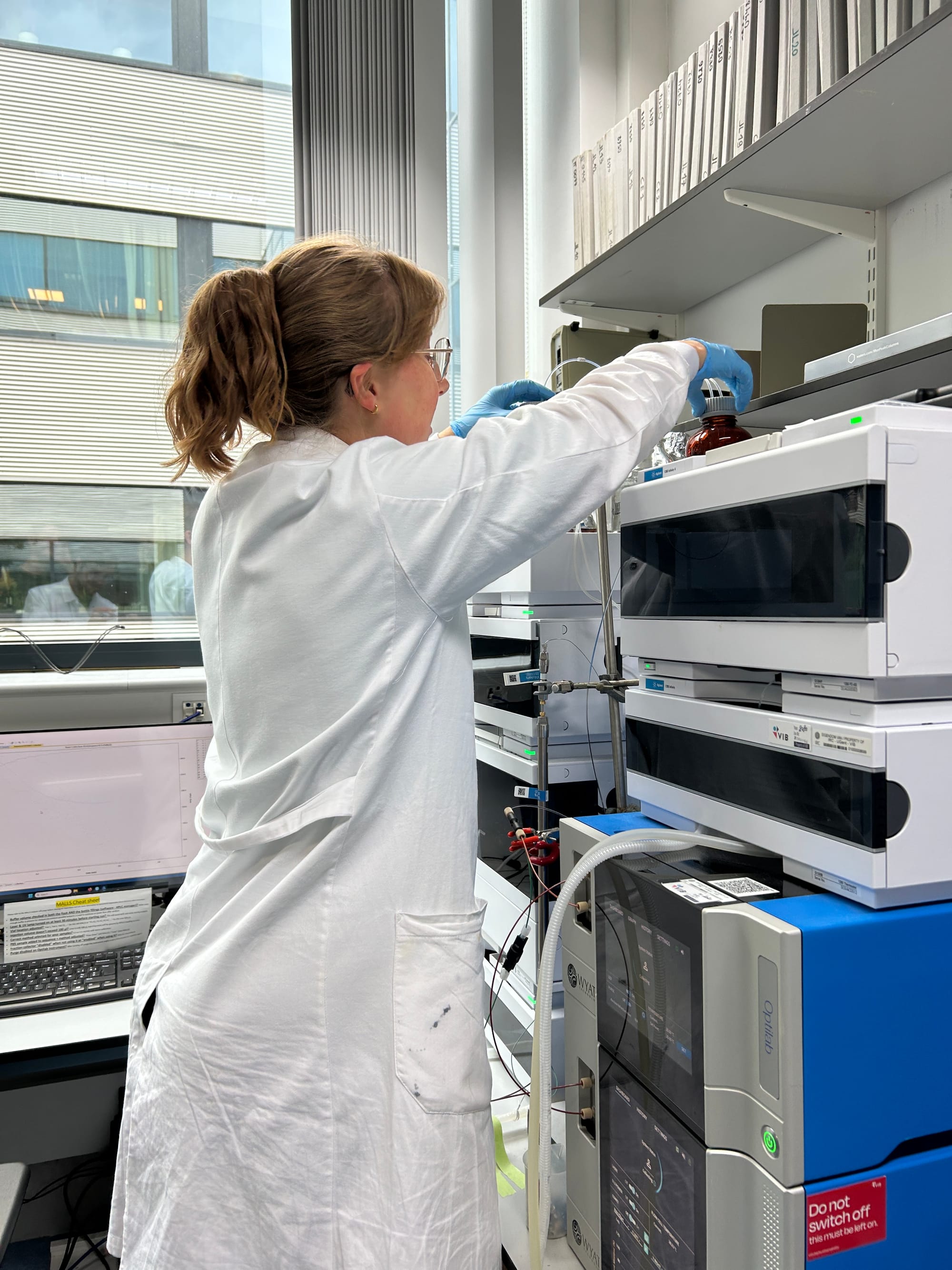
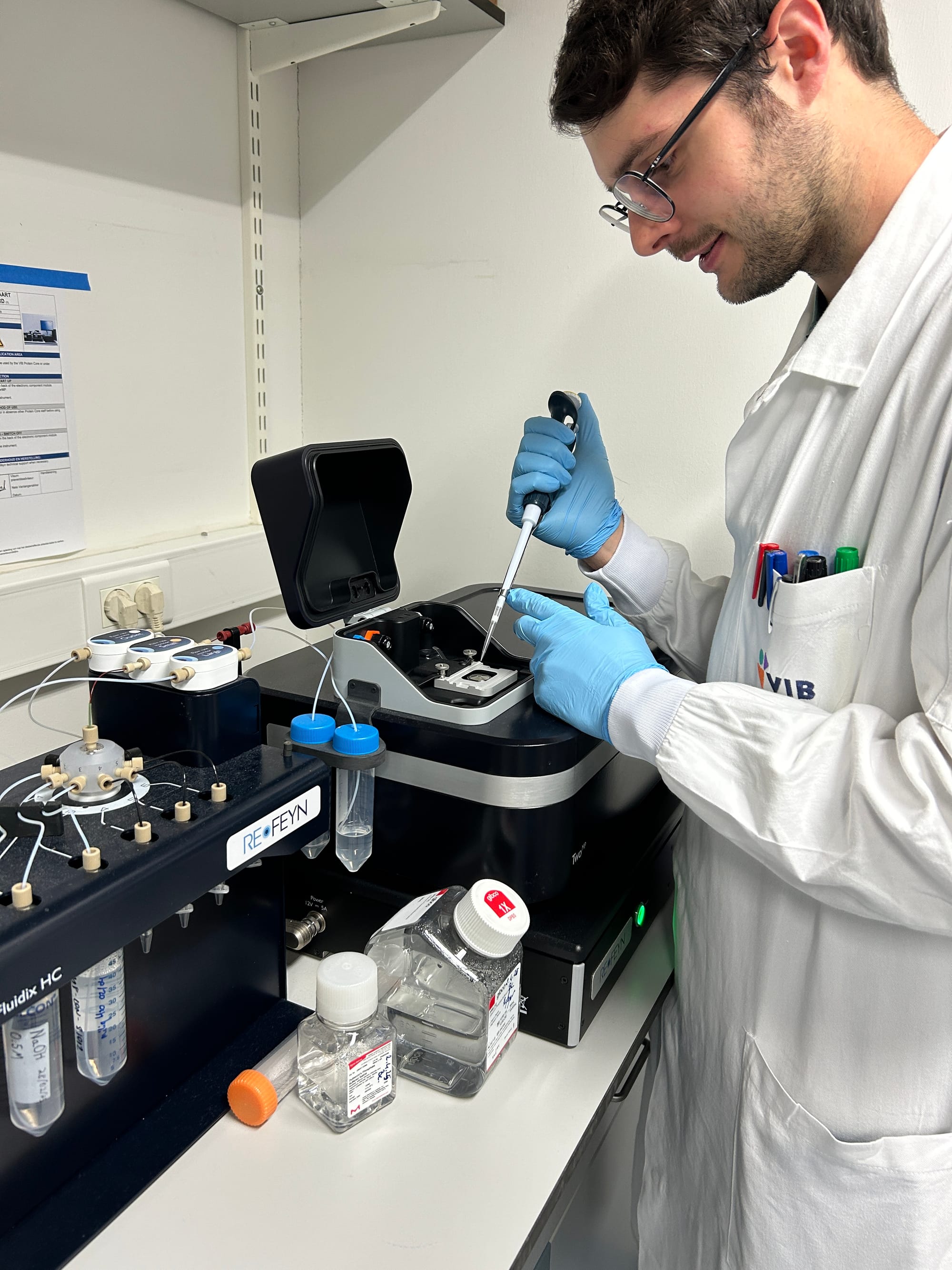

The VIB Protein Core team in action
A pragmatic path through QC
Not every project needs every method. The art is selecting the right-sized panel for your question and protein:
- Receipt & basics → SDS-PAGE • UV/Vis (± refractometry) • Endotoxin
- Solution behavior → SEC-MALLS (± QELS) • DLS • freeze–thaw checks
- Identity/heterogeneity → Intact MS ± peptide mapping • Mass photometry
- Function/interactions → BLI • Biology-relevant activity assay
Lessons learned from the series
If there is anything Kevin hopes his followers remember from his QC deep dive, it is that QC is not overhead but an accelerator. “A few smart checks can save weeks, protect budgets, and make results publication-ready. That’s why I always advise to cross-validate early. A quick second method, like complementing refractometry and A280, prevents downstream pain.”
- Match the method to the molecule. Antibodies, conjugates, and low-aromatic proteins often need non-standard checks.
- Document everything. Full spectra, chromatograms, and raw data make results traceable and reusable.
- Design for the endpoint. Planning an immune assay or in vivo work? Screen endotoxin from the start. Mapping PTMs? Build MS into the plan.
If you’d like to tailor a QC panel to your protein and downstream use, get in touch with the VIB Protein Core. Kevin and his colleagues can advise on the leanest, most informative route, then run it end-to-end and return raw data plus a clear summary.
You can download Kevin’s QC cheat sheet, and, if you enjoyed the series, tell Kevin—he’s already sketching ideas for season two.

